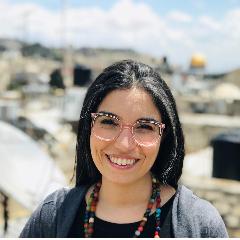Event
A Queen in the Tomb of the Kings: An Ancient Monument and its Modern Legacy
RELS Colloquium
Sarit Kattan Gribetz (Fordham University)

According to the first-century Jewish historian Josephus Flavius, Queen Helena of Adiabene traveled from her kingdom in northern Mesopotamia to Jerusalem to worship the Jewish God in the temple. She ended up staying in the city, building a palace in the south and a monumental family tomb to the north. This queen was not forgotten: she appears in early Christian writings and rabbinic literature, she stars in medieval Jewish-Christian polemics, and there is a street named after her in contemporary Jerusalem. But what happened to the tomb she built? A stroll down Salah al-Din Street in Jerusalem leads to a tall iron gate with the words "Tombeau des Rois” (Tomb of the Kings) emblazoned overhead, behind which stands one of the largest ancient monumental tombs and subterranean burial chambers in the region - the very tomb that most archaeologists today assume to have been commissioned by Queen Helena. How did Queen Helena's mausoleum become the Tomb of the Kings? This talk examines the history of this tomb from antiquity to the present day, with a focus on the long nineteenth and early twentieth century, when the tomb became a popular pilgrimage stop, the city's first archaeological excavation, a tourist destination, and a site for diplomatic visits.
Sarit Kattan Gribetz is an associate professor in the Theology Department at Fordham University. Her areas of research and teaching include rabbinic literature, the history of Jews in the Roman Empire, the city of Jerusalem, conceptions of time and time-keeping, and gender and sexuality. Sarit received her B.A. and Ph.D. from the Religion Department at Princeton University, studied Talmud and Archaeology at the Hebrew University of Jerusalem as a Fulbright Fellow, and served as a research fellow at the Israel Institute for Advanced Study and the Einstein Center Chronoi in Berlin.
